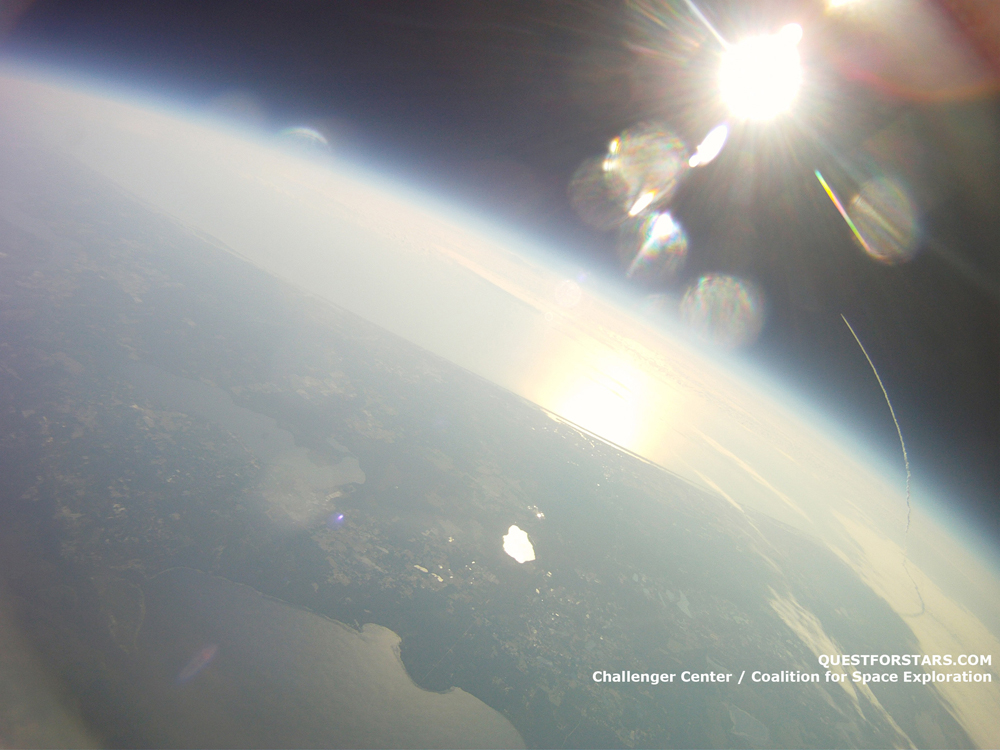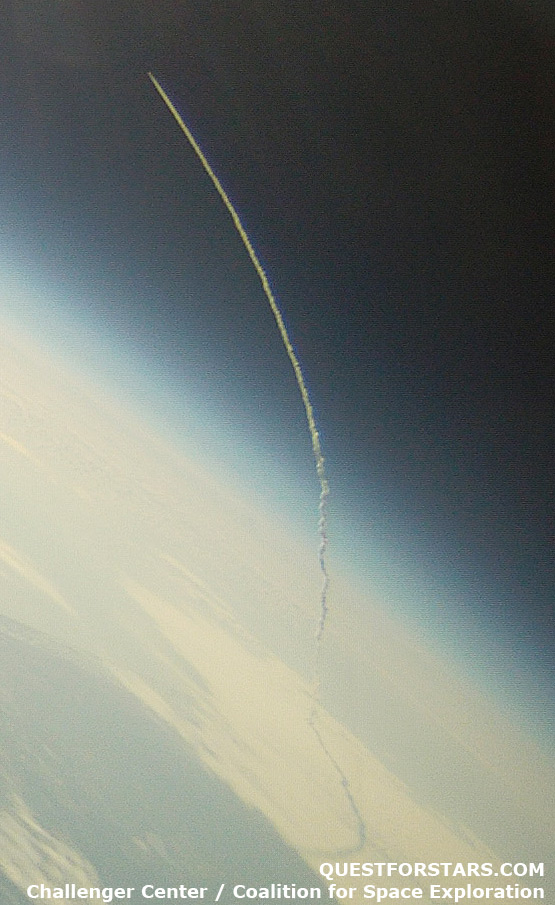Student Balloon Photographs Shuttle Endeavour's Launch Into Orbit

A camera-toting balloon captured unique views of NASA's space shuttle Endeavour as it soared into space for the final time today (May 16), snapping pictures from the stratosphere as part of a student-led project.
The helium-filled balloon carrying the so-called "Senatobia-1" payload was launched near Gainesville, Fla. at 7:30 a.m. EDT (1130 GMT) this morning. Endeavour blasted off from NASA's Kennedy Space Center in Cape Canaveral, Fla. at 8:56 a.m. EDT (1256 GMT). The shuttle is now en route to the International Space Station on its 25th and final mission before it is retired. [See the Student Balloon Photo of Endeavour Launch]
"Senatobia-1 has multiple video and still cameras to catch Endeavour's climb into space," Quest for Stars officials said via Twitter.
The balloon's earlier launch time allowed the payload to be in position at an altitude of approximately 100,000 feet (almost 30,500 meters) to witness Endeavour's supersonic streak beyond the stratosphere. [Shuttle Endeavour Launch Photos: Mission STS-134]
The balloon was built and flown by students as part of a venture conducted by Quest for Stars, a non-profit educational organization, in coordination with the Challenger Center for Space Science Education and the Coalition for Space Exploration.
The intent of the balloon flight is to bring together students and citizens from across a broad range of backgrounds who would not normally have contact with a mission to the edge of space, organization officials said in a statement. [Video: Endeavour's Lift-0ff into History]
Endeavour's flight was the second shuttle launch a Quest for Stars balloon has observed. The group's "Robonaut-1" balloon snapped pictures of the space shuttle Discovery's launch from the edge of space in February 2011.
Breaking space news, the latest updates on rocket launches, skywatching events and more!
The payload of this balloon, Senatobia-1, takes its name from the city of Senatobia, Miss., which has long shared a special connection with Endeavour. Senatobia was one of two communities that originally suggested the name "Endeavour" as a possible name for NASA's youngest space shuttle, which was built as a replacement after Challenger was tragically lost in 1986.
In addition to carrying a still and video camera, a GPS and radio tracking devices, the balloon also toted signatures gathered from a large number of students in Senatobia wishing a speedy recovery for wounded Congresswoman Gabrielle Giffords, wife of Endeavour's STS-134 commander Mark Kelly. Giffords (D-Ariz.) suffered a gunshot wound to the head in a failed assassination attempt at a January constituent meeting in Tucson.
The balloon burst at high altitude and drifted back down to Earth as planned today, its mission complete. Recovery personnel grabbed it and reported that everything had apparently worked well.
"Recovery team reports Senatobia-1 Balloon payload recovered in 'pristine' condition w/ all cameras still operating after mission to 95K+ ft," Quest for Stars officials tweeted today.
Follow SPACE.com for the latest in space science and exploration news on Twitter @Spacedotcom and on Facebook.

Space.com is the premier source of space exploration, innovation and astronomy news, chronicling (and celebrating) humanity's ongoing expansion across the final frontier. Originally founded in 1999, Space.com is, and always has been, the passion of writers and editors who are space fans and also trained journalists. Our current news team consists of Editor-in-Chief Tariq Malik; Editor Hanneke Weitering, Senior Space Writer Mike Wall; Senior Writer Meghan Bartels; Senior Writer Chelsea Gohd, Senior Writer Tereza Pultarova and Staff Writer Alexander Cox, focusing on e-commerce. Senior Producer Steve Spaleta oversees our space videos, with Diana Whitcroft as our Social Media Editor.

